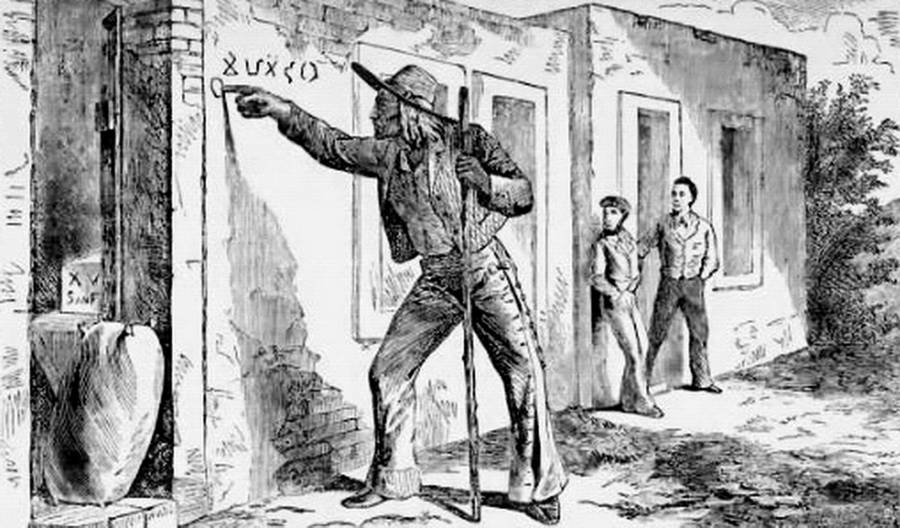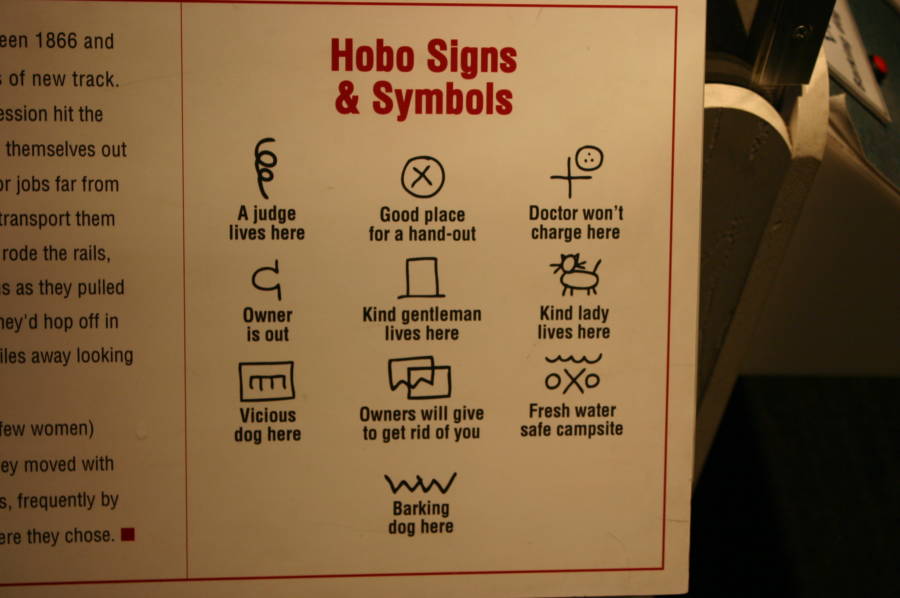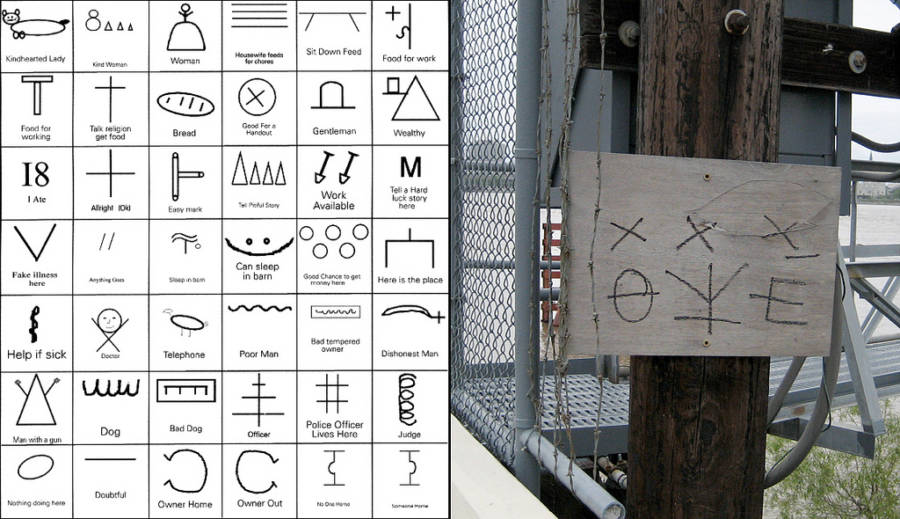Survival doesn't entail physical strength alone — it also requires good communication.

Wikimedia Commons
Around the mid to late 1800s, poor, migrant workers roamed the country from coast to coast in search of work.
Usually hopping onto train cars for a free, albeit illegal, ride to their next destination, the life of the transient worker was quite often a dangerous one, and in order to stay out of harm’s way, these men developed what is known as the “hobo code” to communicate with their fellow traveler. Modern hobo culture got its start around the 1860s after Civil War veterans, many of them newly homeless, roaming the country in search of work.
The term “hobo,” now a somewhat offensive jab at those who make up homeless or vagrant populations, originated during this time and was used to describe impoverished migrant workers traversing the coasts in search of job and a place to call home, even if only for a few days.
Just how did one go about crossing the country with no money around the turn of the 20th century? Train hopping, specifically freight cars that carried the train hoppers from state to state. A lucky worker may have even found himself employed by a railroad company on a part-time basis, making the tracks a common place for migrant workers to meet their needs.
Of course, hitching a free ride on a train traveling the countryside wasn’t exactly a leisurely endeavor, as train-hopping was illegal, forcing them to hide in cramped spaces for fear of being caught and kicked off, or hauled to jail.
Depending on what part of the country a hobo may have found themselves in, the weather conditions could be harsh and even life-threatening — especially in the winter months where many froze to death.

Wikimedia Commons
In between rides and jobs, migrants were usually limited to squatting in abandoned buildings or other unusual places, an already difficult pursuit made even harder by law enforcement and area residents who considered them to be bad news.
This prompted the development of a language known as the “hobo code,” a series of characters and symbols hobos would use to communicate with one another and most importantly, to aid in their survival.
Although typically loners by circumstance, this group of vagabonds understood the importance of solidarity and helping their peers. They used the esoteric hobo code for everything from warning someone about vicious dogs, unfriendly owners, judges, cops, and anything else that would serve them well to avoid.
In addition to cautionary signs, the hobo code would allow migrants to share the wealth of valuable information they had picked up along the way, cluing others in on a home that may have a gracious host, a hayloft one could sleep in for the night, a place to seek care if others happened to be sick, and good, safe drinking water, among others.
The glyphs of the hobo code also helped hobos learn which systems were easiest to exploit, indicating churches that would provide them a free meal in exchange for a “religious talk,” a kind woman easily manipulated by the sound of a “pitiful story,” or to put it simply, an “easy mark, sucker.”

Golan Levin/Flickr
While hobo culture in its traditional sense more or less disappeared sometime during the 20th century, the hobo code remains in use to this day. Its symbols are sometimes seen in areas which typically employ migrant workers or day laborers, such as docks and ferry crossings as depicted in the photo above that was seen at the Canal Street ferry in New Orleans, Louisiana.
For more on how poverty has changed over time after this look at the hobo code, read up on this surprising population that now finds itself facing some serious economic woes.





